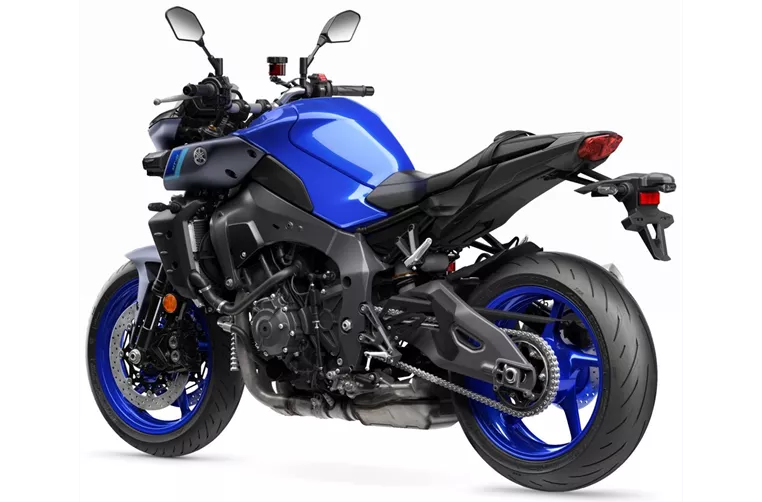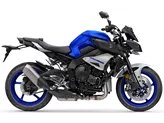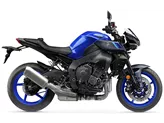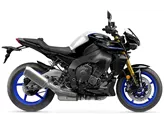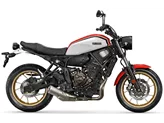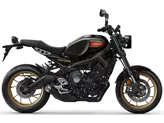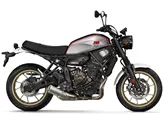Yamaha MT-10 2022 vs. Yamaha XSR900 2018
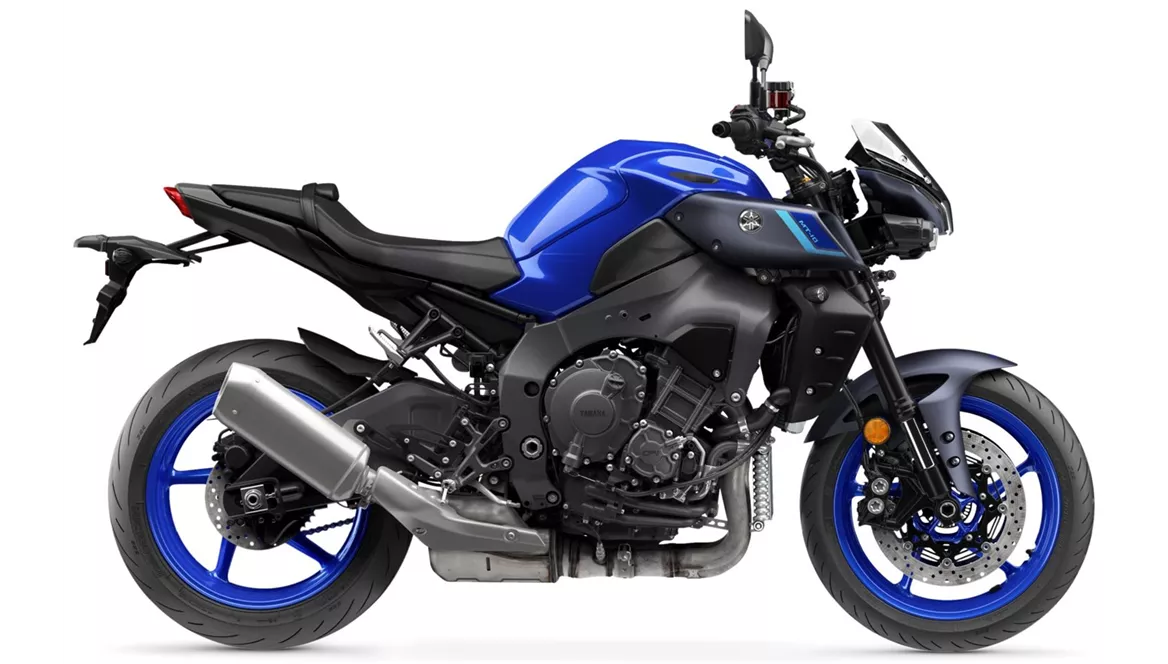
Yamaha MT-10 2022

Yamaha XSR900 2018
Overview - Yamaha MT-10 2022 vs Yamaha XSR900 2018
The Yamaha MT-10 2022 and the Yamaha XSR900 2018 are both naked bikes from Yamaha, but they have some notable differences in terms of technical specifications and strengths.
Starting with the engine and drivetrain, the Yamaha MT-10 2022 is equipped with an in-line, 4-cylinder engine that produces 166 HP of power and 112 Nm of torque. On the other hand, the Yamaha XSR900 2018 features an in-line, 3-cylinder engine with 115 HP of power and 87.5 Nm of torque. The MT-10 has a higher power output, making it more suitable for riders who prefer a more powerful and thrilling riding experience.
In terms of suspension, both bikes have upside-down telescopic forks at the front and a swing arm with a monoshock at the rear. This setup provides good stability and handling for both models.
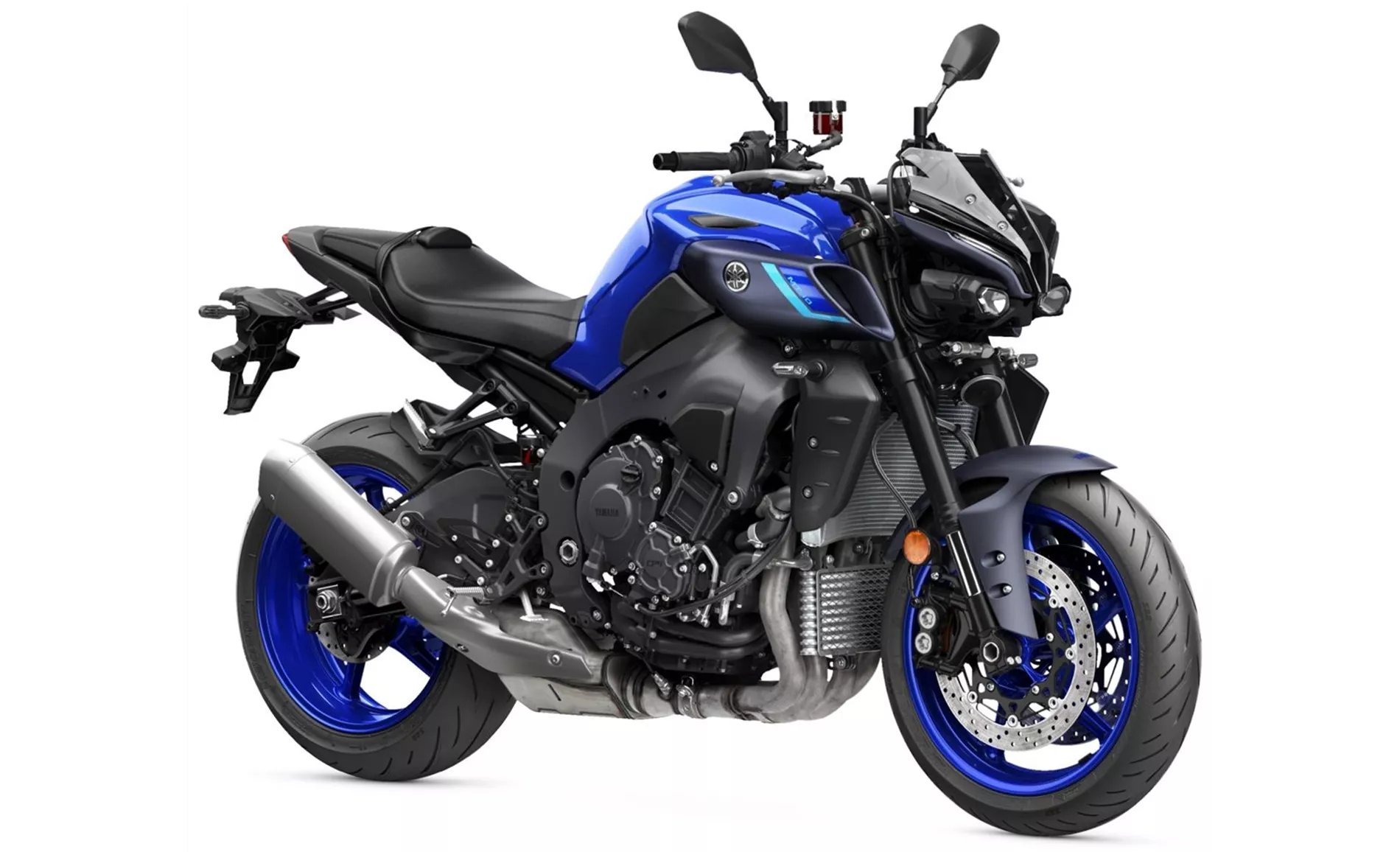
Yamaha MT-10 2022
The chassis of both bikes is made of aluminum, which offers a good balance between strength and weight. However, the frame type differs, with the MT-10 featuring a Deltabox frame and the XSR900 having a Twin Tube frame. The Deltabox frame is known for its rigidity and stability, while the Twin Tube frame provides a balance between rigidity and flexibility.
When it comes to brakes, both bikes have double disc brakes at the front. However, the MT-10 has larger diameter discs (320 mm) compared to the XSR900 (298 mm), which provides better braking performance and control for the MT-10.
In terms of advanced rider assistance systems, the Yamaha MT-10 2022 offers a comprehensive package including ABS, riding modes, cornering ABS, ride by wire, shift assistant with blipper, cruise control, traction control, and anti-wheelie. On the other hand, the Yamaha XSR900 2018 only has ABS.
In terms of dimensions and weights, the Yamaha MT-10 2022 has a slightly smaller wheelbase (1405 mm) compared to the Yamaha XSR900 2018 (1440 mm). The seat height of the MT-10 is also slightly higher (835 mm) compared to the XSR900 (815 mm). However, the XSR900 has a smaller fuel tank capacity (14 l) compared to the MT-10 (17 l). The kerb weight of the MT-10 with ABS is slightly higher (212 kg) compared to the XSR900 (191 kg).

Yamaha XSR900 2018
In terms of strengths, the Yamaha MT-10 2022 is praised for its lovely CP4 engine, great electronics package, distinctive look, comfortable seating position, easy-to-read gauges, and cornering ABS. On the other hand, the Yamaha XSR900 2018 is known for its extremely sporty and rev-happy engine, excellent brakes, riding at naked bike level, pleasant seating position, high-quality workmanship, and price-performance ratio.
However, both bikes have some weaknesses. The Yamaha MT-10 2022 lacks an adjustable clutch lever and steel braided brake hoses, while the display is somewhat small. The Yamaha XSR900 2018 has an almost too direct response from the engine and the retro style is not thought through to the last detail.
In conclusion, the Yamaha MT-10 2022 and the Yamaha XSR900 2018 are both impressive naked bikes from Yamaha, each with its own strengths and weaknesses. The MT-10 offers a more powerful engine and a comprehensive electronics package, while the XSR900 provides a sporty engine and a good price-performance ratio. Ultimately, the choice between the two models will depend on the rider's preferences and priorities.
Technical Specifications Yamaha MT-10 2022 compared to Yamaha XSR900 2018
Pros and Cons in comparison
Pros and Cons in comparison
Yamaha MT-10 2022
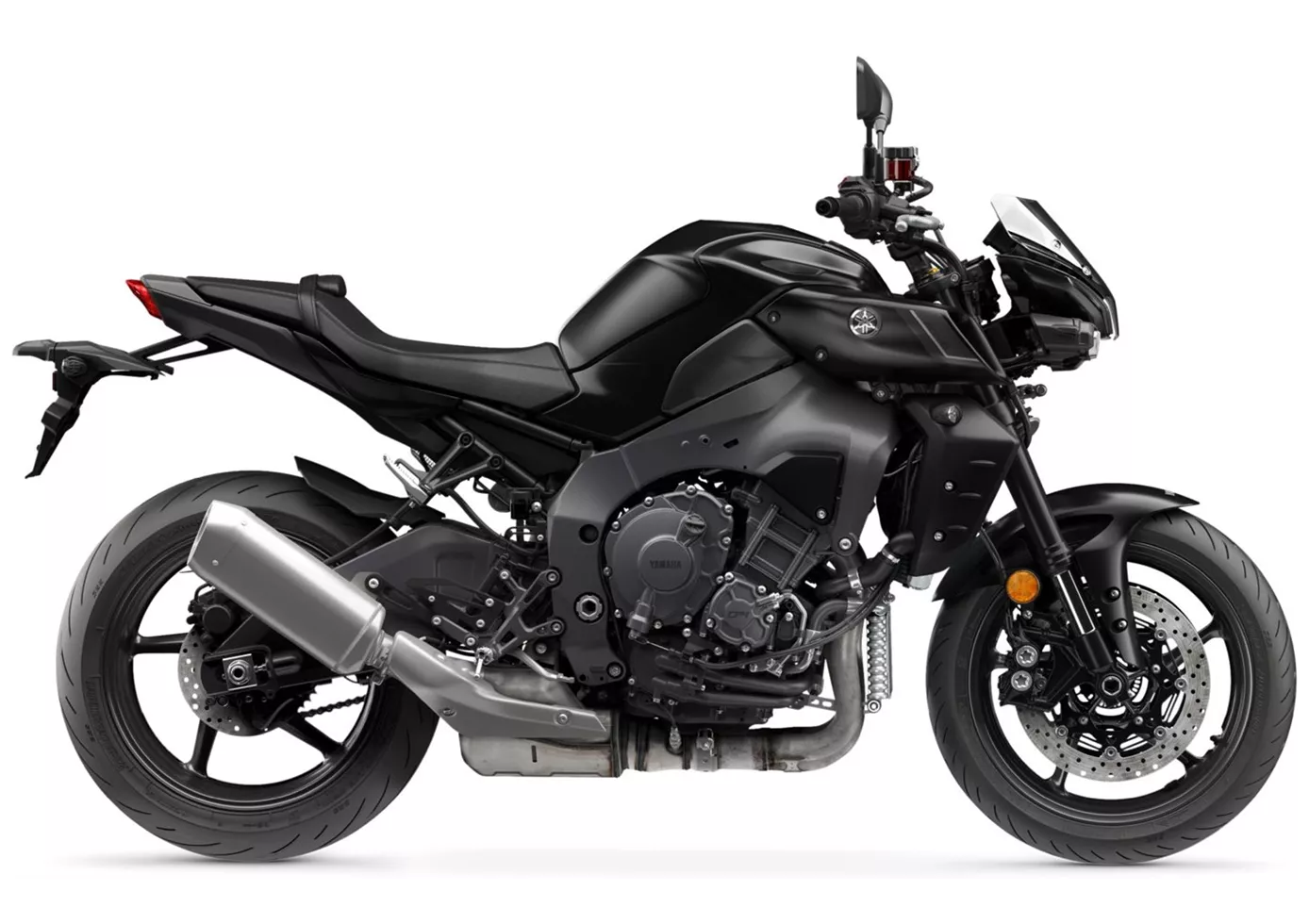
La nouvelle MT-10 est une évolution vraiment réussie de son prédécesseur, tout en restant parfaitement fidèle à son caractère. Le nouveau pack électronique avec une IMU à 6 axes est une merveille, toutes les caractéristiques sont si bien configurées et interagissent si bien que le pilote est assisté de manière optimale par l'électronique dans toutes les situations, sans être mis sous tutelle. Les autres composants du châssis et des freins sont tout à fait corrects et l'optique dans le style Mad Max-Brachialo a certes été un peu atténuée par rapport à la précédente, mais elle reste toujours unique et clairement reconnaissable comme MT-10.
Yamaha XSR900 2018

La Yamaha XSR900 est une illusion d'optique classique - avec son phare rond, son réservoir anguleux et son feu arrière rapporté, elle passe clairement pour une moto rétro. Mais ce n'est pas un hasard si ses performances rappellent celles de la puissante moto tout terrain de classe moyenne Yamaha MT-09, car celle-ci constitue la base extrêmement sportive de la XSR900. Le moteur est donc une merveille et les freins sont très puissants. En ce qui concerne le châssis, les techniciens n'exagèrent heureusement pas, la XSR900 offre suffisamment de confort et la position d'assise droite est plus confortable que ne le laisserait supposer le moteur puissant. Dans la catégorie des motos rétro, la XSR900 est néanmoins l'un des modèles les plus sportifs.
Price Comparison Avarage Market Price Yamaha MT-10 vs Yamaha XSR900
There are a few key differences between a Yamaha MT-10 2022 and a Yamaha XSR900 2018. In terms of price, the actual average price of a Yamaha MT-10 2022 is about 89% higher. A Yamaha MT-10 2022 experiences a loss of 440 USD in one year of ownership. This is offset by a loss of 180 USD for a Yamaha XSR900 2018. Compared to Yamaha XSR900 2018 there are more Yamaha MT-10 2022 bikes available on the 1000PS.de Marketplace, specifically 76 compared to 4. It takes less time to sell a Yamaha XSR900 with 123 days compared to 151 days for the Yamaha MT-10. Since model year 2016 1000PS.de editors have written 32 reviews for the Yamaha MT-10 and 30 reviews for the Yamaha XSR900 since model year 2016. The first review for the Yamaha MT-10 was published on 11/17/2015 and now has more than 20,700 views. This compares to more than 17,600 views for the first review on Yamaha XSR900 published on 11/25/2015.
